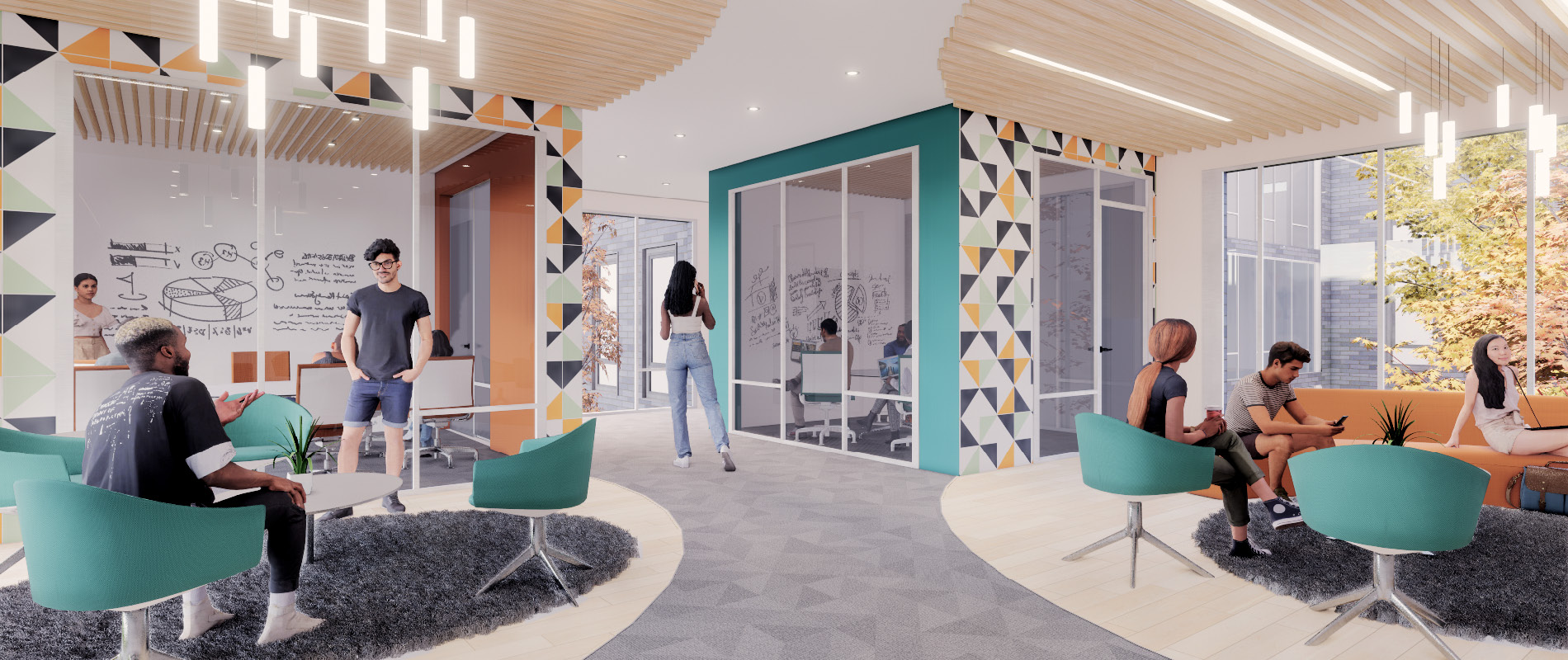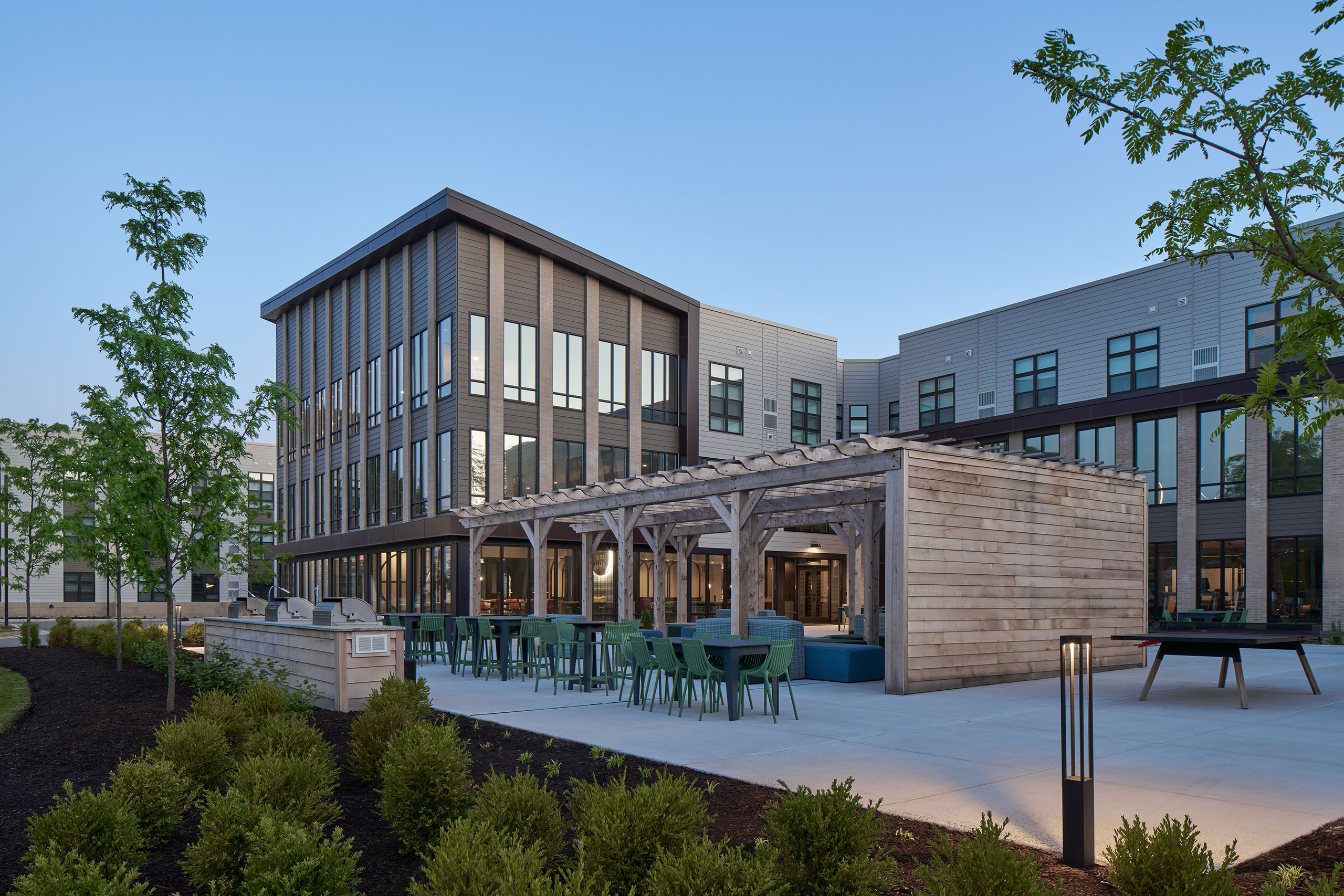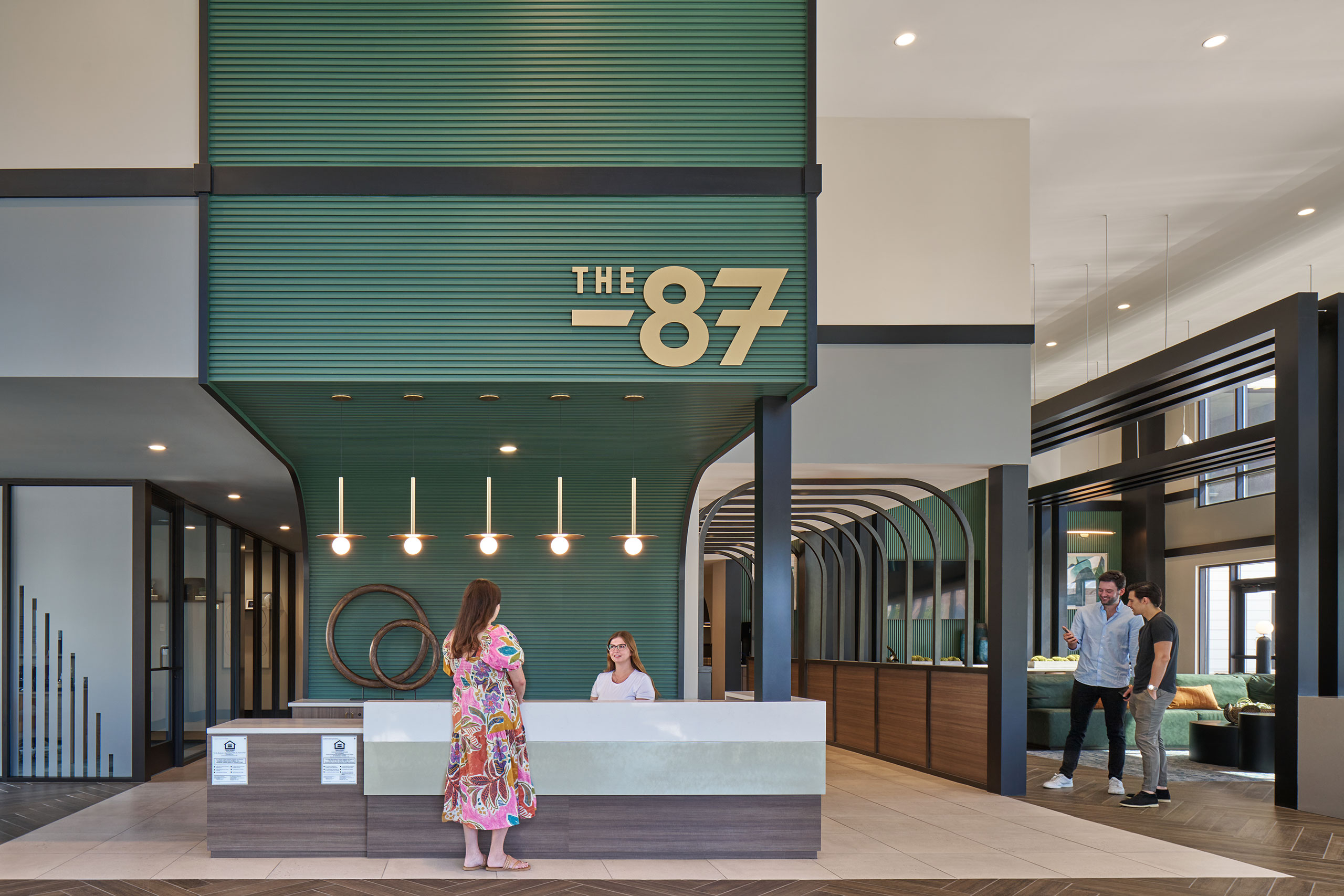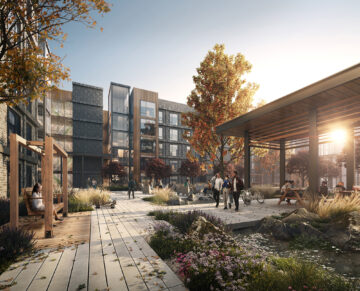Student housing design leads the industry in wellness and sustainable design strategies because the current generation of college students, primarily members of Gen Z, expect their communities to address those issues. This cohort exhibits more self-awareness of their own mental and physical wellness, expresses less stigma about mental illness and has demonstrated more interest in the greater good at a younger age than previous generations. As the current generation of student residents graduate and enter the workforce in the next few years, they will expect market rate housing to do a better job of addressing wellness and sustainability too.
 The KTGY Research and Development Studio created “Thrive Hall,” a student housing concept for mental health and wellness that proposes seven evidence-based design objectives to improve and support the mental health of student residents.
The KTGY Research and Development Studio created “Thrive Hall,” a student housing concept for mental health and wellness that proposes seven evidence-based design objectives to improve and support the mental health of student residents.
Encouragingly, the University of Michigan’s latest Annual Healthy Minds Study from 2023-2024, which surveyed 100,000-plus college students from more than 200 universities across the country, reports positive trends in mental health outcomes for American students: “..there are decreases in symptoms of anxiety, depression and thoughts of suicide, and increases in receiving mental health care and support.” Specifically, the study found a decrease in severe depressive symptoms from 23% in 2022 and 20% in 2023 to 19% in 2024, more students (61%) are using mental health therapy or counseling compared to 59% in 2023, and more students reported taking psychiatric medication (31% in 2024 vs. 29% in 2022 and 2023). This and other studies do show an increase in the diagnosis of mental illness among college students, though this may be attributable to greater awareness and increased diagnoses, not increased prevalence.
Remember that the Gen Z students entering college now were in middle and high school during the height of the COVID-19 pandemic, and they bring that visceral experience of isolation and missing milestones with them. The potential impact of health-related events deeply affected their collective perspective on the world and their individual roles within it. To them, health and wellness are associated with personal safety and their ability to thrive, so they bring that expectation to their first experience living away from home. These factors and preferences lead designers to make student housing communities that effectively employ wellness and sustainable strategies to resonate with the current generation of student residents.
The KTGY Research and Development Studio created “Thrive Hall,” a student housing concept for mental health and wellness that proposes seven evidence-based design objectives to improve and support the mental health of student residents: creating community “pods” of 50 or fewer people, reinforcing community using current co-housing principles, connection to nature in both natural light and outdoor spaces, intentional study spaces separate from sleeping rooms, prioritizing quality rest, encouraging an active lifestyle, and providing easy access to mental health support. Building on the research foundation of Thrive Hall, KTGY designs student housing communities, such as The 87 near the University of Notre Dame and Pique near UC Berkeley, which employ these design principles.
 The 87 creates community pods by subdividing the site into multiple buildings and a variety of types of units, both stacked-flats and multi-story units.
The 87 creates community pods by subdividing the site into multiple buildings and a variety of types of units, both stacked-flats and multi-story units.
The 87 in South Bend, Ind., creates community pods by subdividing the site into multiple buildings and a variety of types of units, both stacked-flats and multi-story units. The visual and physical connection to nature is emphasized by a series of amenity courtyards linking the buildings and creating a hierarchy and mix of outdoor open spaces. A large central study space located adjacent to the other main amenity spaces (leasing, lounge and fitness areas) and satellite study spaces are dispersed throughout the other buildings as well. The 87 opened in the fall of 2024 and the initial reviews indicate early successes in building a welcoming sense of community, with positive comments about the multiple study rooms, common amenity spaces and resident services programming.
 The 87 in South Bend, Ind., opened in the fall of 2024 to positive comments about the multiple study rooms, common amenity spaces and resident services programming.
The 87 in South Bend, Ind., opened in the fall of 2024 to positive comments about the multiple study rooms, common amenity spaces and resident services programming.
Pique in Berkeley, Calif., leans into co-living by proposing macro-units that can house up to 14 students — a strategy to reinforce a sense of community while also increasing housing attainability by creating a unique path to non-subsidized affordability in an extremely high-cost housing market. Pique only parks bicycles on site, which reinforces its aggressive sustainability goals while also encouraging physical activity and enhancing the walkability of its infill urban context.
The lack of parking for automobiles at Pique also responds to Gen Z’s decreased interest in private car ownership as both a cost-saving strategy and, perhaps more altruistically, to reduce their personal carbon footprint and preferring public transportation, cycling and ridesharing over solo-driving. McKinsey published a report in 2022, citing data from the U.S. Federal Highway Administration, that noted the stark decrease in the percentage of teenage drivers: in 1997, 43% of 16-yearolds and 62% of 17-year-olds (aka the “elder Millennials”) had driver licenses; but by 2020, only 25% of 16-year-olds and 45% of 17-year-olds had drivers licenses.
Student housing design is often on the forefront of trends, and it represents the next era of housing designed to support human wellness and sustainability. Today’s student residents are tomorrow’s market-rate apartment dwellers. These current student residents’ values are successfully influencing the design and programming of their communities at universities across the country and will continue to do so as they emerge into the greater housing market in the next several years.

